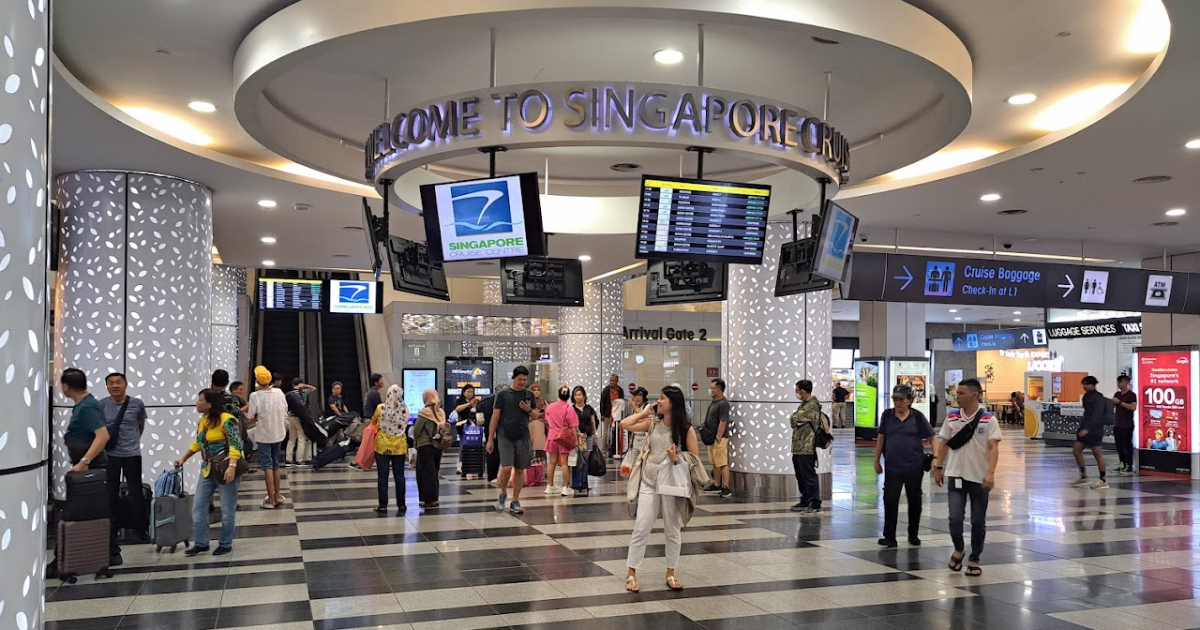Update, May 14: This article has been updated to include a joint statement by the Urban Redevelopment Authority (URA) and Singapore Tourism Board (STB).
The Singapore Cruise Centre at HarbourFront is set to move.
Its move will help to create a continuous promenade as part of the Greater Southern Waterfront.
The other cruise centre, Marina Bay Cruise Centre Singapore at Marina South, will stay.
Move will help "stitch up the waterfront"
Urban Redevelopment Authority (URA) chief executive Lim Eng Hwee told The Straits Times the "small move" will allow the authorities to “stitch up the entire waterfront” from Labrador Nature Park through to the Keppel-Tanjong Pagar area, Marina Bay and the future Long Island.
The city port terminals located near the cruise centre in HarbourFront — Tanjong Pagar, Keppel, and Brani — will move to Tuas by 2027.
Lim said a lot of infrastructural work needs to be done with the port moving, including some reclamation.
He added the area will be progressively build up once all the infrastructure is done.
Marina Bay Cruise Centre Singapore was reported to be under consideration for expansion in 2018, just six years after it first opened in 2012.
URA and the Singapore Tourism Board said in a follow-up joint statement to clarify on May 13 that ST's article headline was on "the longer-term consolidation of cruise infrastructure in Singapore, which is currently under study".
"There are currently no plans to merge the operations of Singapore Cruise Centre with Marina Bay Cruise Centre Singapore," two government entities said.
ST's article headline was titled, "Cruise centres to be merged, freeing up space along southern waterfront".
Other plans to free up land for other use
Plans to bring together the cruise terminals are just one example of infrastructure consolidation by authorities in recent years aimed to free up land for other uses, said Lim.
Over the past three to four decades, the authorities recognised the importance of flexibility and ability to make big changes, in an event there's a big driving force that changes the way Singaporeans live, work and play.
Lim said such land "with a big footprint" gives planners the flexibility to make major moves, such as restructuring the city and towns.
For instance, some existing military training grounds including Changi East and Paya Lebar Air Base (PLAB), have been labelled "option areas", as they are large areas that have no fixed uses as of yet, giving a choice to consider different options and scenarios on what the area can be turned into.
The removal of PLAB, which will be relocated in the 2030s, will not only free up 800ha of space, but also create new opportunities for planners to optimise surrounding land as heigh constraints on developments will be lifted.
Housing needs have shifted over time, driven by lifestyle changes
The need for large-scale redevelopment projects is more driven by Singaporeans' change in lifestyle compared to increase in population, though population do continue to play a role, said Lim.
While Singapore continues to experience a declining birth rate, the resident population continue to grow by 51.6 per cent over two decades.
The resident population in 1990 was 2,735,868, compared to 4,149,253 in 2023.
The average household size among the resident population for both Singaporeans and permanent residents has also decreased from 4.25 in 1990 to 3.11 in 2023.
More singles also desire moving out and living alone, which will become one of the driving forces that will continue to spur the need for development, said Lim.
Top image via Christopher Seow/Google Maps

If you like what you read, follow us on Facebook, Instagram, Twitter and Telegram to get the latest updates.



